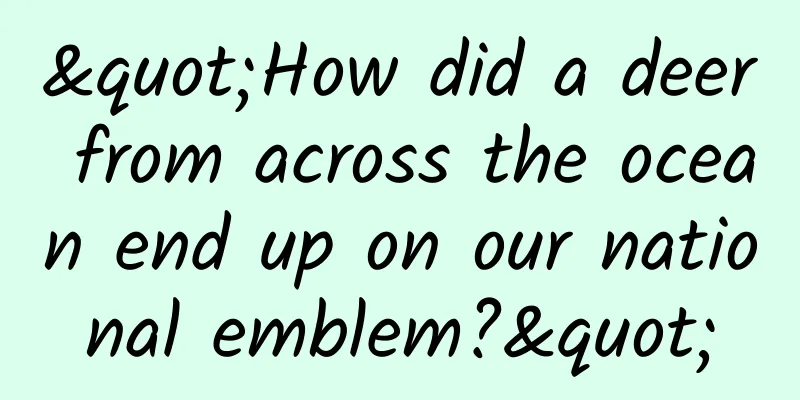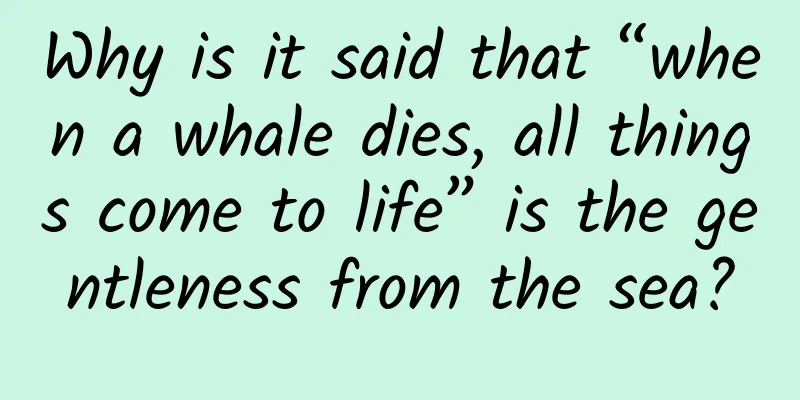"How did a deer from across the ocean end up on our national emblem?"

|
This is the national emblem of Antigua and Barbuda. Antigua and Barbuda is an island country in Central America, consisting of two major islands, Antigua and Barbuda, and a number of nearby small islands. It is one of the least populated countries in the world, with a permanent population of only 100,000. The national emblem of Antigua is full of important species on the island: pineapple, hibiscus, sugar cane, agave... Standing on both sides of the shield are the tiān deer (Dama dama). The national emblem of Antigua and Barbuda. The two deer on either side are fallow deer | Wikimedia Commons However, fallow deer are not native to Amba , their native land is actually in Europe. How did this four-legged animal cross the ocean and reach the Caribbean? And why did the Amba people paint an alien species on their national emblem? Where do fallow deer come from? In its native Europe, fallow deer are one of the most common deer species today. However, 18,000 years ago, after the end of the last glacial maximum, the only country in the world with confirmed natural fallow deer populations was actually Turkey . Some scholars believe that fallow deer may have originally been distributed in higher latitudes in Europe, but the harsh ice age forced the survivors to migrate southward, and eventually retreated to places such as the Anatolian Peninsula in Turkey. Fallen deer population distribution map, 1 is the confirmed origin (including the distribution area of its relative Dama mesopotamica), 2 is the possible origin, 3 is the early introduction area, 4 is the modern introduction area | Wikimedia Commons Later, as humans gradually emerged, the distribution of fallow deer populations also changed. The expansion of the Roman Empire in the 1st century AD, and the expansion of the Byzantine and Norman Empires in the 10th to 15th centuries AD, led to the migration of fallow deer back to Central and Northern Europe . Deer populations in different regions evolved different characteristics: osteometry shows that the talus near the ankle of the fallow deer population that remained in southern Europe was more slender, while the talus of the fallow deer that migrated to northern Europe was relatively thick and short. The characteristics of the astragalus of the Amba fallow deer are similar to those of the fallow deer in Northern Europe, indicating that they may have been brought to Central America from Northern Europe . If we go back to the history of Amba, we can also find evidence to support this research inference. In 1632, the British began to colonize Antigua, and two years later they colonized Barbuda. In 1685, the British royal family granted the right to rule the area to the Codrington family. At that time, the family operated a sugarcane plantation on Antigua, and also traded slaves from Africa, placing slaves and livestock on Barbuda. Map of the British colonial period. The red areas are all British colonies at the time. References [2] The Codrington family settled in the Caribbean and still maintained close ties with Europe. For example, Codrington III, who was born in Barbados (another island in the Caribbean), returned to England to study in his youth and returned to the Caribbean in 1705. Two years later, Hans Sloane, a British physician who was traveling in South America, saw a kind of deer in Barbados. He recorded in his travel notes: "I saw white-tailed deer (Odocoileus virginianus) next to the church. They look exactly like our fallow deer ." However, since the identification of deer species was not perfect at that time and the witness was not a biologist, some researchers suspected that the so-called "white-tailed deer" was actually a fallow deer. Before this, the conclusions about when fallow deer were introduced to the Caribbean were very general. Even in the more authoritative book "Fallow Deer: History, Distribution and Biology", the description of this time node was "roughly between 1700 and 1772". Fallen deer (left) and white-tailed deer (right). I heard someone might confuse us | USDA photo by Scott Bauer; Michel Langeveld / Wikimedia Commons If the new hypothesis is correct, the introduction of fallow deer can probably be traced back to around 1705, when Codrington III brought them back from England to Barbados. After that, as the Codrington family moved between various territories, the footprints of fallow deer soon spread across these small islands. However, there is little historical information on how fallow deer were brought to the Caribbean. The claim that Codrington III brought fallow deer from England is just a hypothesis that scholars have pieced together from the documents. Why were fallow deer introduced to Amba? The most basic explanation for the introduction of species is that they are intended to serve as food for humans . In the mid-18th century, the British Empire started a trend of introducing non-native species to marginal areas. Joseph Banks, then president of the Royal Society, believed that by transporting and exchanging animals, residents of different countries would be able to obtain a steady supply of new resources, thus "saving themselves from the terrible effects of hurricanes and droughts." However, fallow deer are large in size and the distance from Europe to the Caribbean is long , so a lot of manpower and material resources will be consumed during transportation, which is not worth the cost. In comparison, white-tailed deer, which are closer in origin, may be more suitable. Therefore, the "ration theory" is a little weak when applied to fallow deer. The second explanation is that it was for hunting game . In the past, nobles in many countries hunted deer for fun | Wikimedia Commons At that time, the trend of building estates was prevalent in Britain, and thousands of deer parks appeared across the country, and the number of fallow deer increased dramatically. The owners of the estates gained considerable social benefits from deer - they organized hunting activities or distributed venison for free as a kind of etiquette among the nobles. When these British nobles crossed the ocean to the colonies, they might have brought fallow deer with them as their belongings . The third explanation is that the role of the fallow deer has been separated from the entity and transformed into an ideological embodiment . The British aristocracy regarded raising a group of fallow deer in the manor as a way to control nature . In the colonies, when the arrogant colonists came to the local natives, the fallow deer around them seemed to become a symbol of order, power, and civilization . Some scholars believe that this is the main reason why fallow deer were introduced to the Caribbean region, and it laid the groundwork for the fallow deer to appear on the national emblem of Antigua and Barbuda. Hunting and poaching The colonists naturally considered themselves to have absolute dominion over all the resources of the colony—from deer to land—and they also stipulated that only the British nobility had the right to hunt fallow deer . The enslaved people had a completely different attitude: They believed that the deer and the land belonged to everyone , not just anyone. This attitude prompted one overseer to write to the Codrington family in frustration: "They acknowledge no master, and think the island belongs to them alone." Men crushing sugar cane at a windmill in Antigua, 1823 | William Clark / Wikimedia Commons Between 1761 and 1790, British nobles on the island of Barbuda complained that local slaves were poaching their deer. Given the noble status of fallow deer at the time, poaching became a social and political statement— it was about personal empowerment gained by subverting the existing system. It is no coincidence that local slave rebellions occurred frequently in the 18th century, and that thefts became more frequent during the same period . In 1834, the British Empire abolished slavery and local slaves were liberated. During this period, the spiritual core of the fallow deer also changed: gradually changing from a symbol of colonial rule to a symbol of national spirit. Deer carry too much in their lives | Michel Langeveld / Wikimedia Commons In the 1960s, when Antigua and Barbuda updated its national emblem, they painted the fallow deer on the new emblem along with important local cash crops. Today, fallow deer still have special symbolic meaning in Amba. Every four years, during the Living from the Land celebration, people hunt fallow deer and celebrate by eating fallow deer meat. However, when they hunt fallow deer, the word used is still **poaching (poach) rather than **hunting (hunt),** and the shadow of history still flashes between the lines. References [1]Sophia Perdikaris, Allison Bain, Sandrine Grouard, Karis Baker, Edith Gonzalez, A. Rus Hoelzel, Holly Miller, Reaksha Persaud & Naomi Sykes (2018) From Icon of Empire to National Emblem: New Evidence for the Fallow Deer of Barbuda, Environmental Archaeology, 23:1, 47-55, DOI: 10.1080/14614103.2017.1349027 [2]Oliver, Vere Langford (1894) The history of the island of Antigua, one of the Leeward Caribbees in the West Indies, from the first settlement in 1635 to the present time [3]Murray, RJ (2001) “The Man That Says Slaves Be Quite Happy in Slavery … Is Either Ignorant or a Lying Person … ” An Account of Slavery in the Marginal Colonies of the British West Indies. Unpublished PhD thesis, University of Glasgow. Author: Siyi Editor: Mai Mai This article comes from the Species Calendar, welcome to forward If you need to reprint, please contact [email protected] |
<<: Before the advent of scales, people didn’t need to weigh themselves
>>: "Tianzhi-2D" satellite was launched, and the types of satellites are as follows
Recommend
APP user operation: analysis of user growth system, with 6 major cases!
For the idea of writing, please refer to the fo...
One article to completely improve the conversion rate of landing pages!
The article is very long and you may not be able ...
Toutiao 2019-2020 Marketing Plan
About the marketing plan of Toutiao platform Tout...
These days, the whole world is paying attention to this monkey! How does the graphics card light up every frame of fantasy on the journey to the West?
At 10:00 am on August 20, the domestic game "...
All Tibetan areas in Sichuan have been lifted out of poverty! How did the local government do it?
On February 18, the Sichuan Provincial Government...
How much energy was there at the time of the Big Bang? An incredible truth is deduced
A friend invited me to answer this question: The ...
Why Mars is the first choice for deep space exploration
Human exploration of Mars began in the 1960s. The...
If we don’t speak the same language, will our thinking also be different?
If we don’t speak the same language, will our thi...
Internet access is expensive, so let the operators decide for themselves.
[[131858]] The reporter found yesterday that ...
100 seconds to review the wonderful content of "Universe-level online course"
This afternoon The third lesson of "Tiangong...
From being raised in the palace to being on the verge of extinction today, what has the rhino family experienced?
Produced by: Science Popularization China Author:...
From the five-seater version of the Q-M9 to the coupe SUV of the Zhijie R7, Hongmeng Zhixing, which has entered its explosive period, has all
On September 10, Huawei released a three-fold scr...
Learned! It turns out that there are at least 5 ways to die from the new coronavirus...
Recently, many new COVID-19 cases have been repor...
Xinfei's fall: once more profitable than Haier, but now it has been reduced to suspension of production
On Hongli Avenue (center) in Xinxiang City, Henan...
Super IP Training Camp: Performance expression, efficient output of high-quality short video operation skills, valued at 999 yuan
Super IP Training Camp: Performance expression, e...









